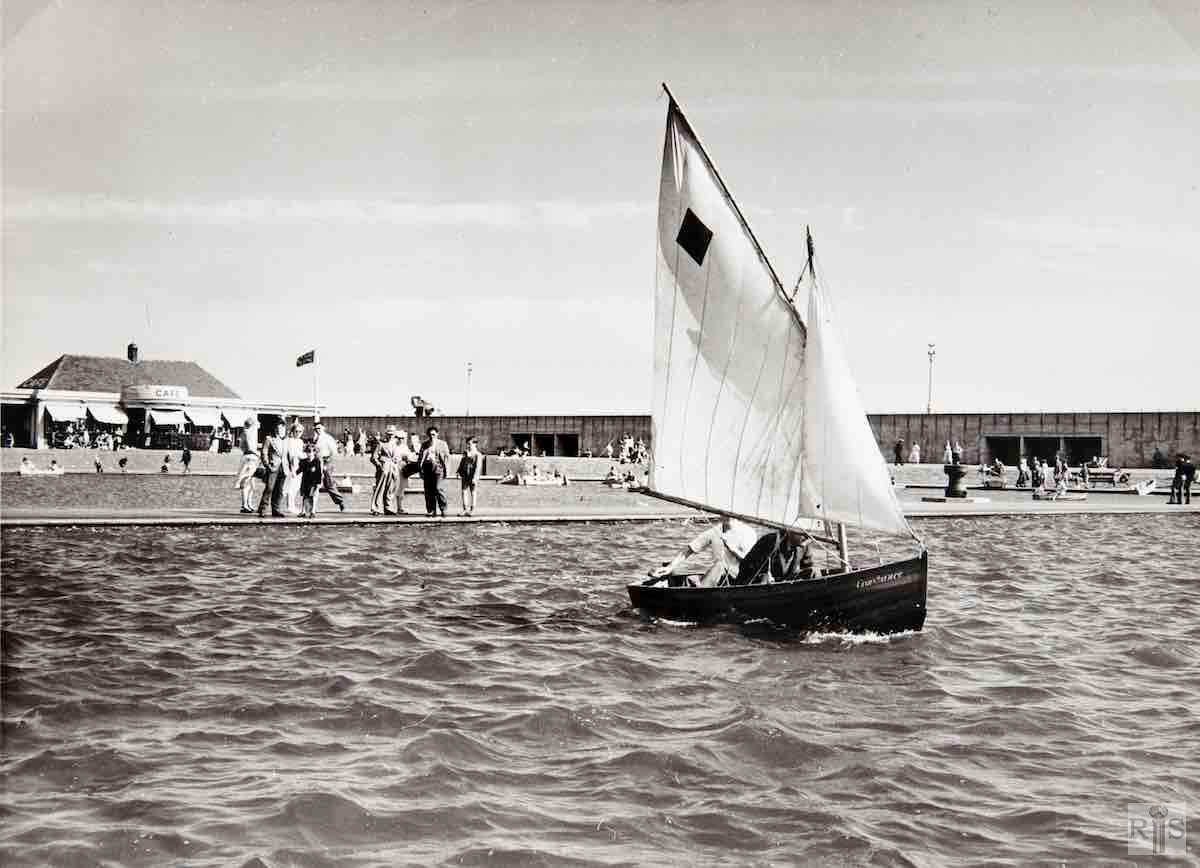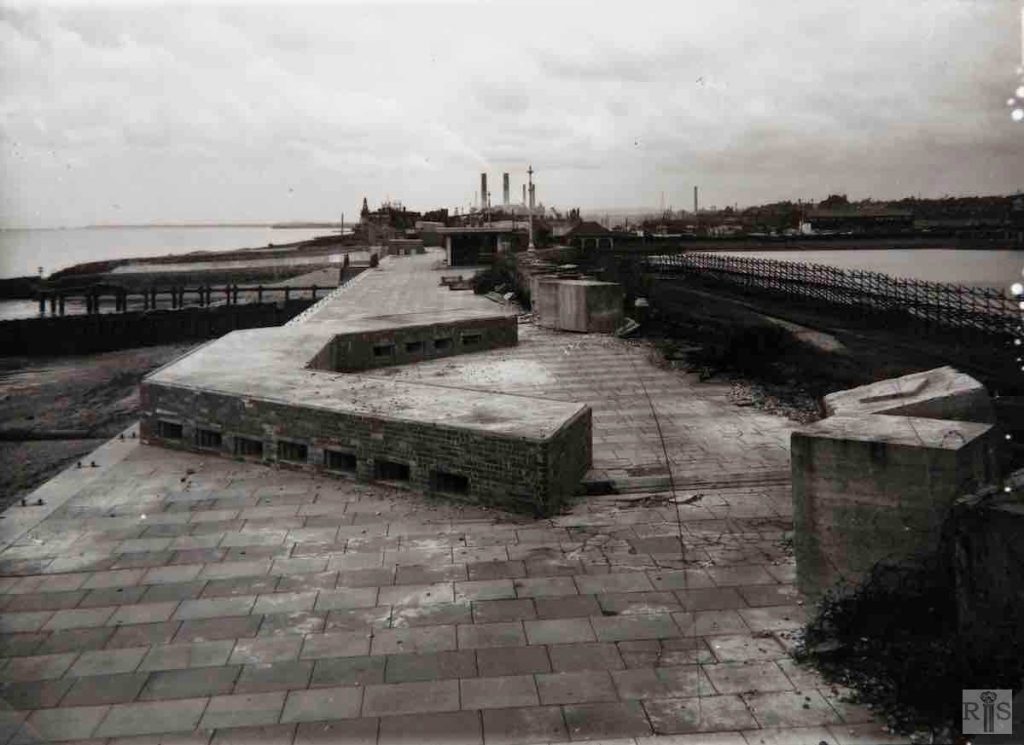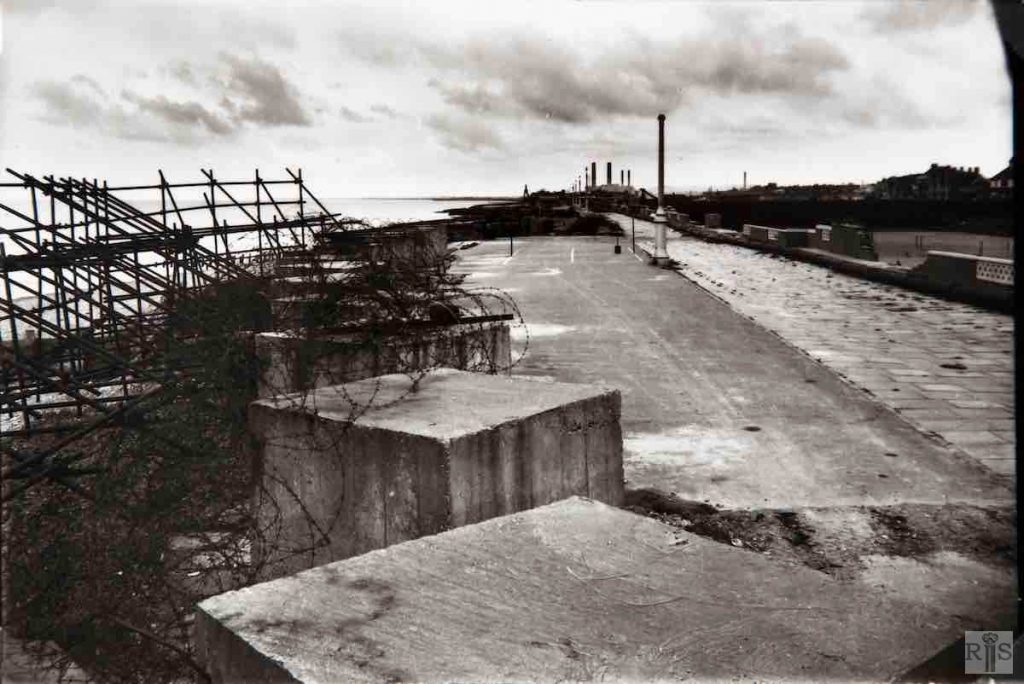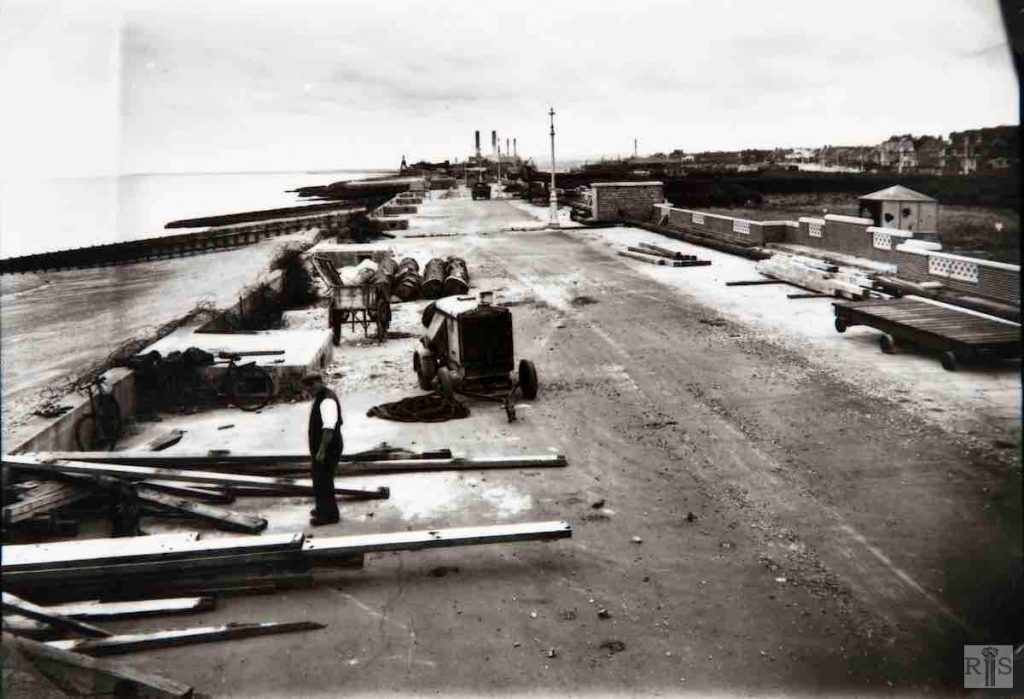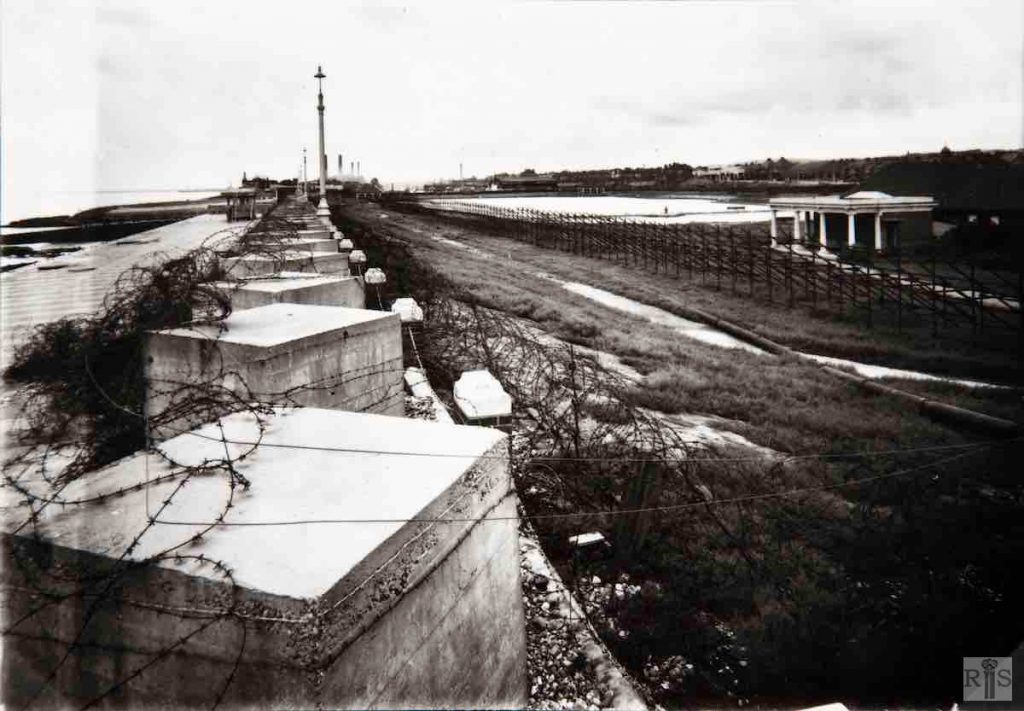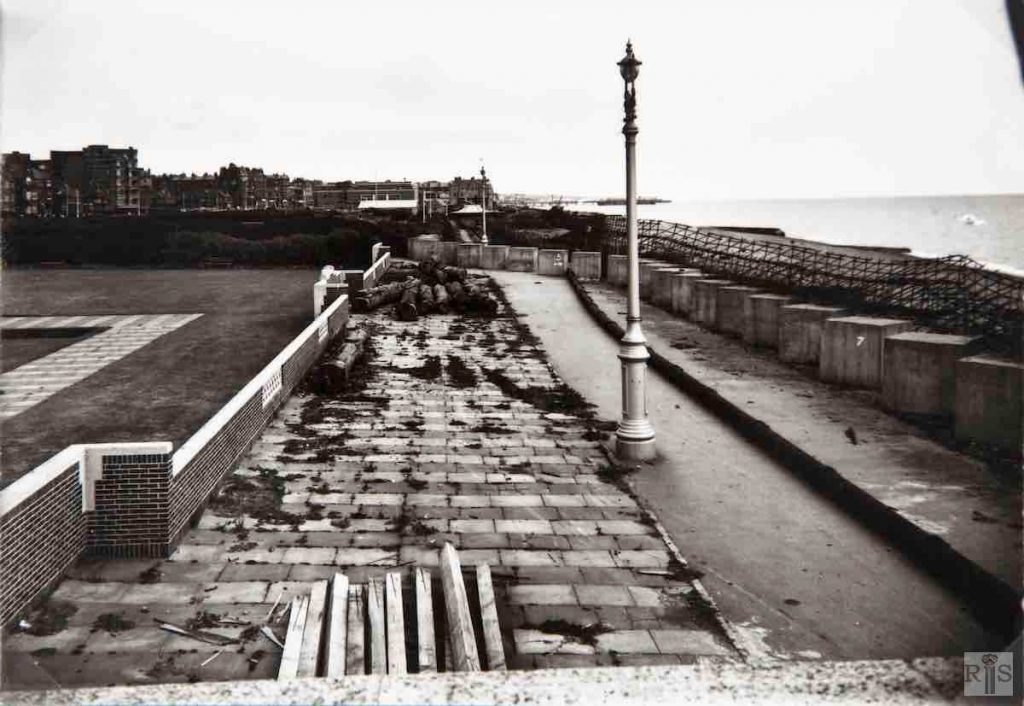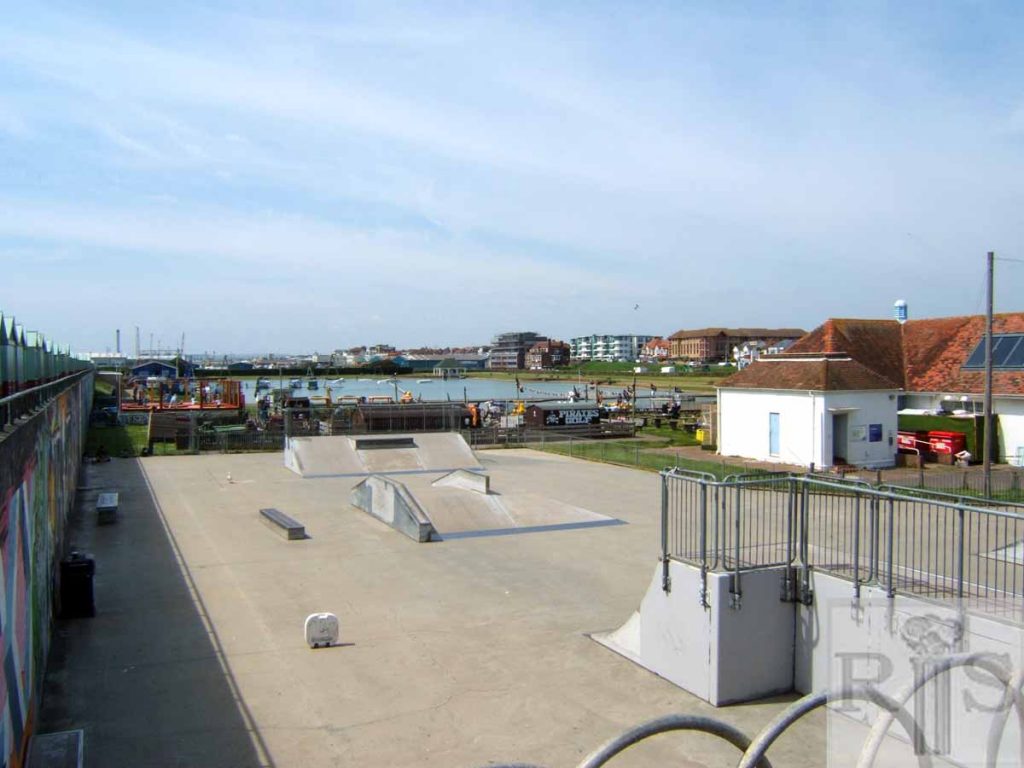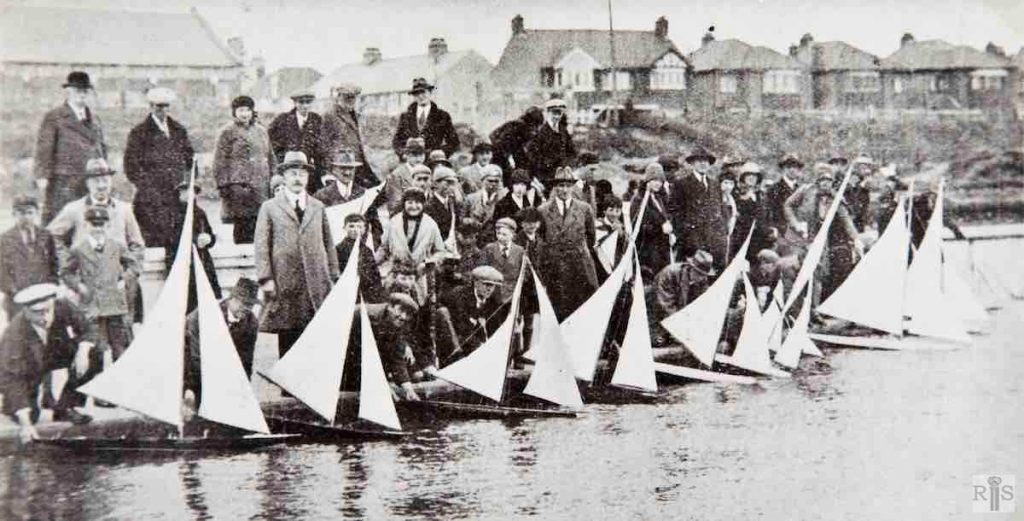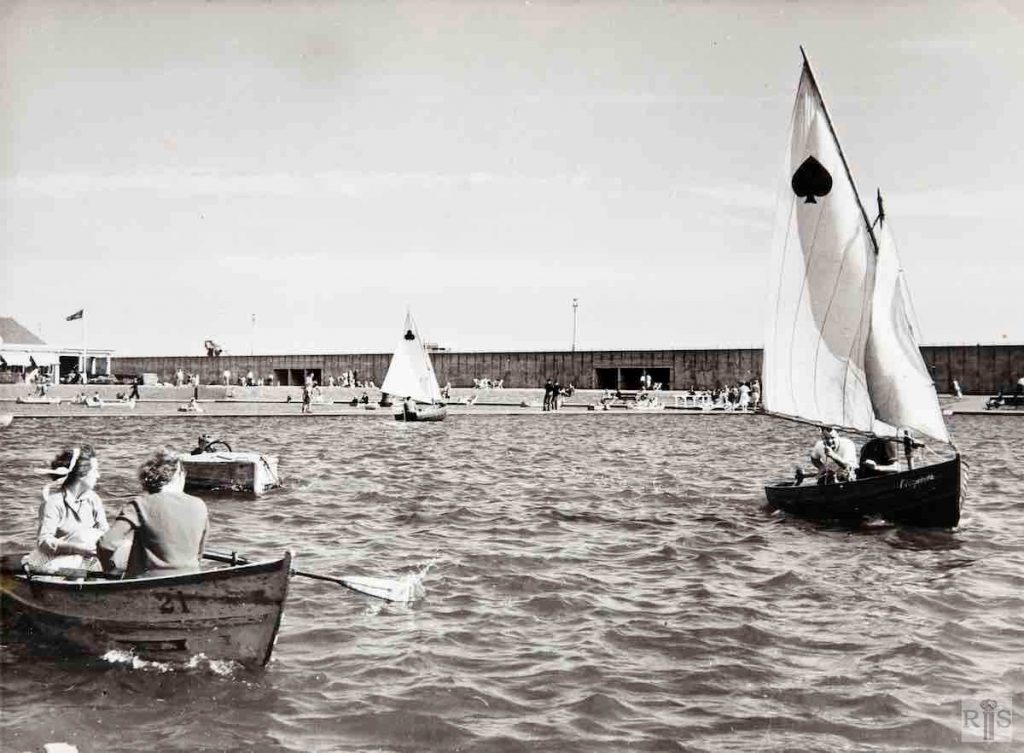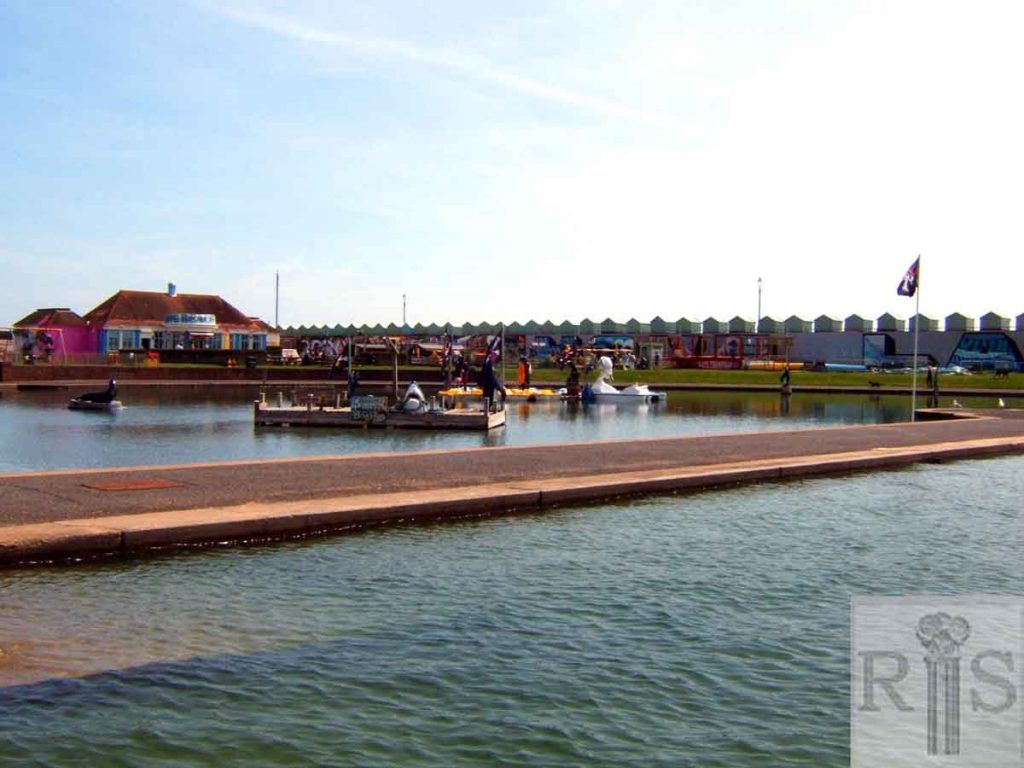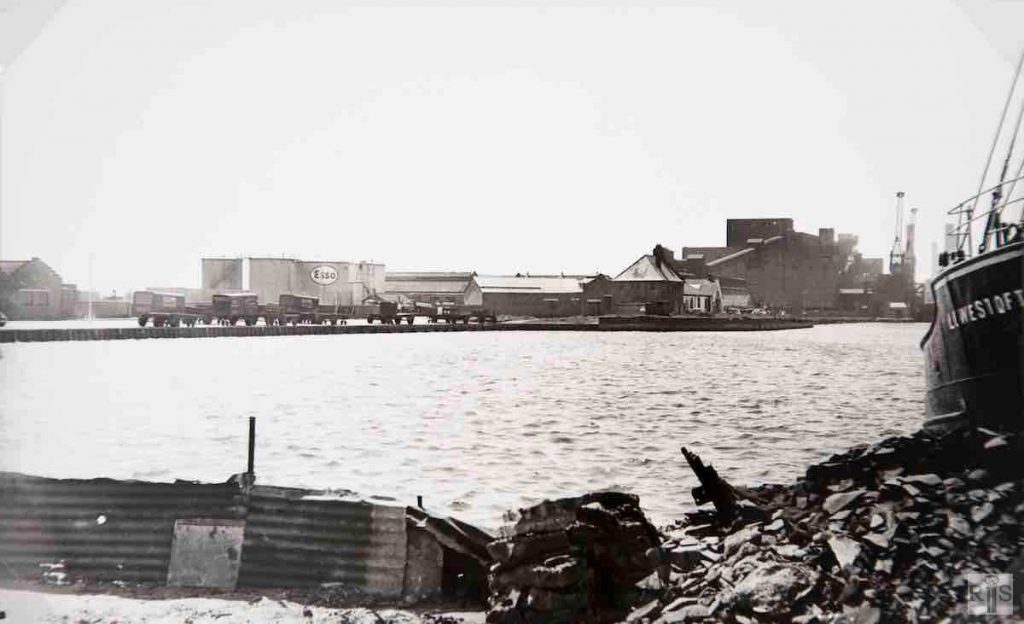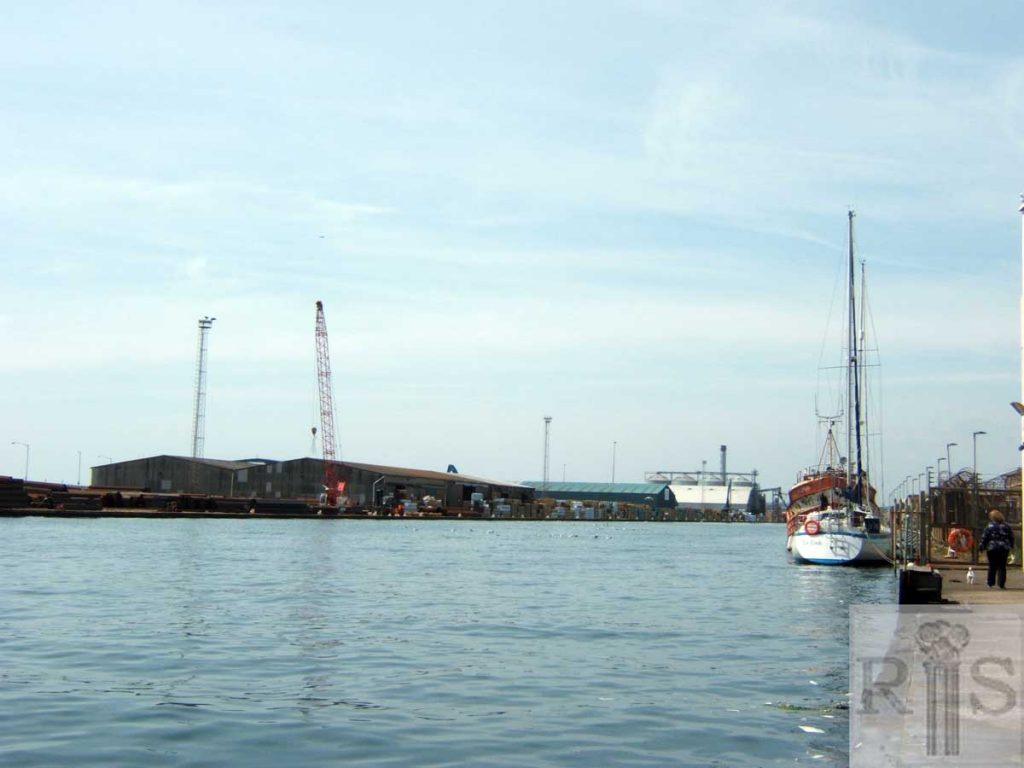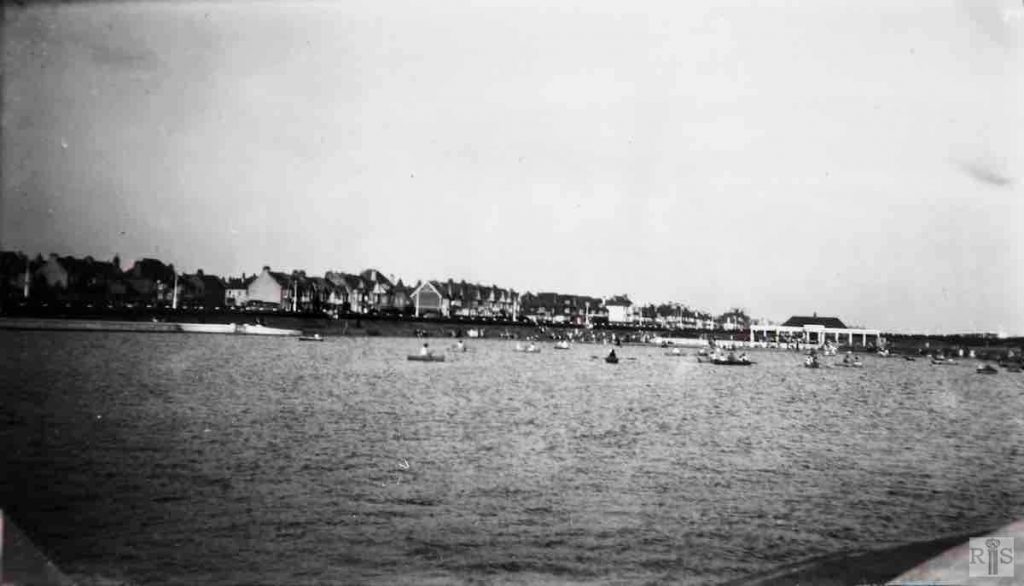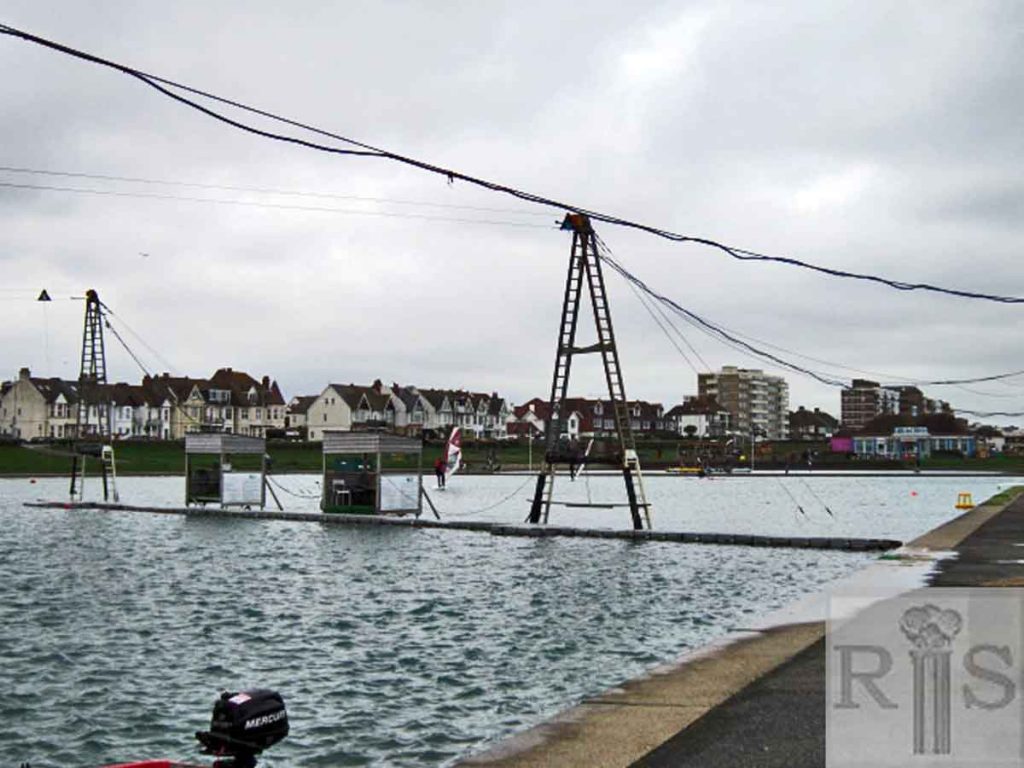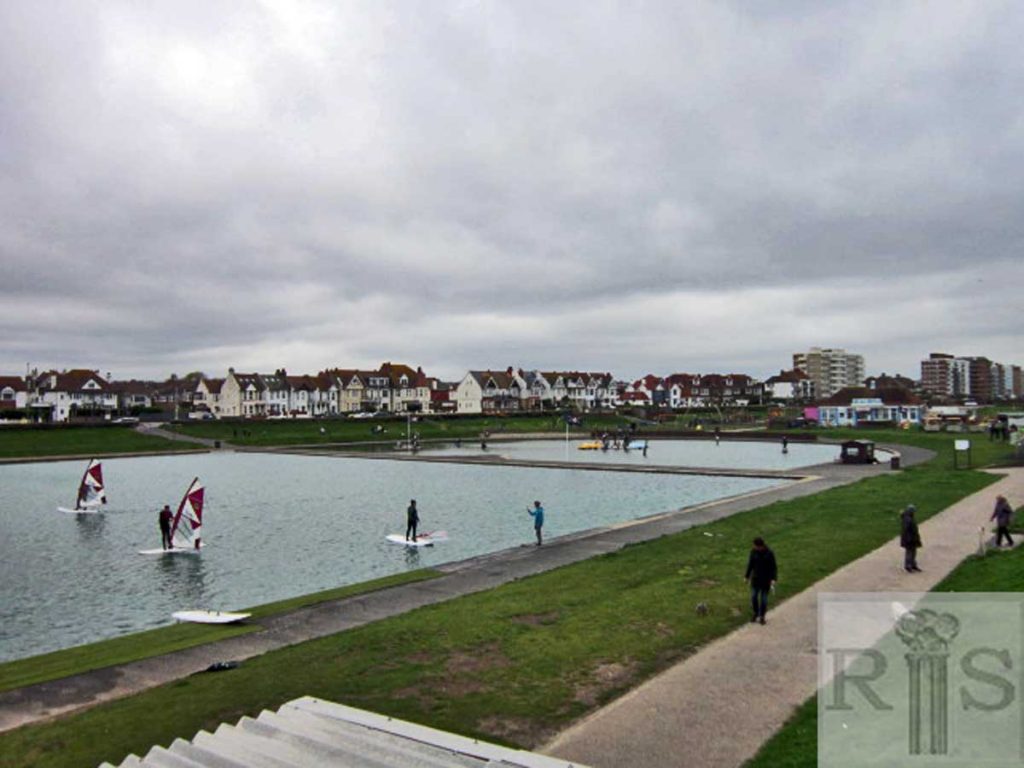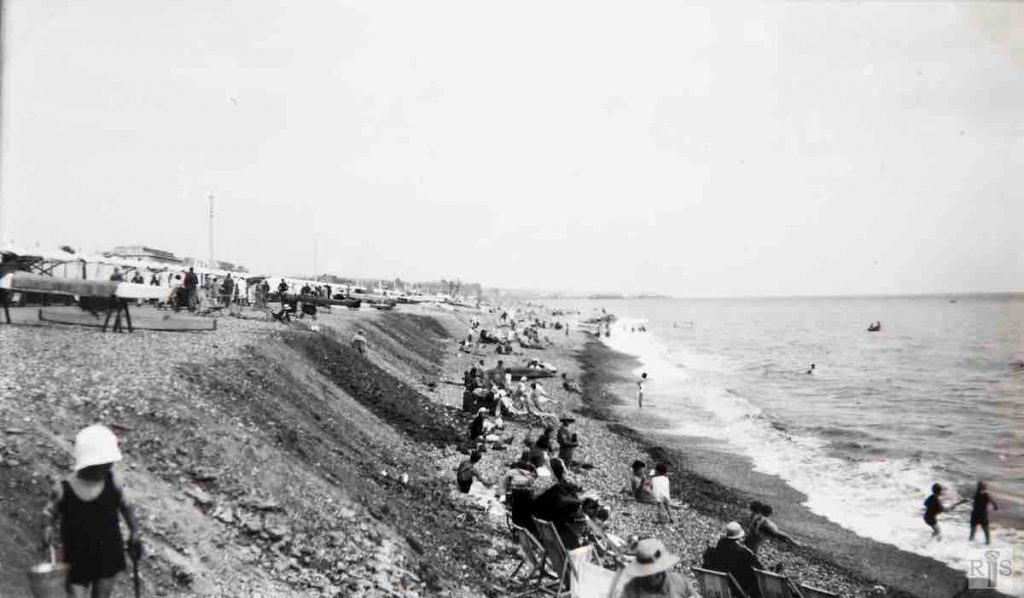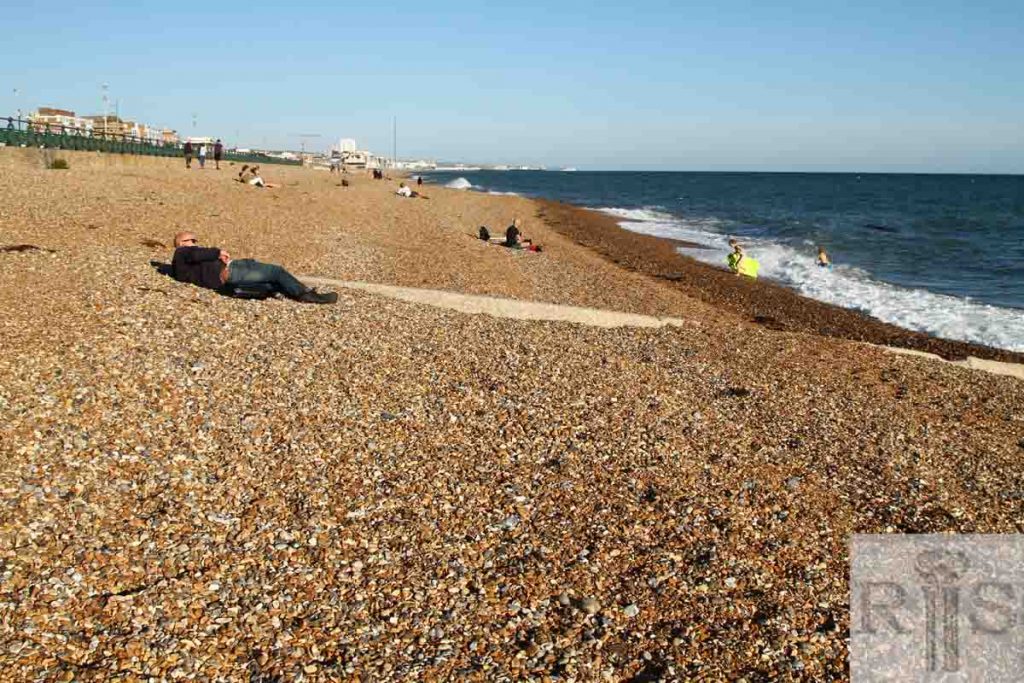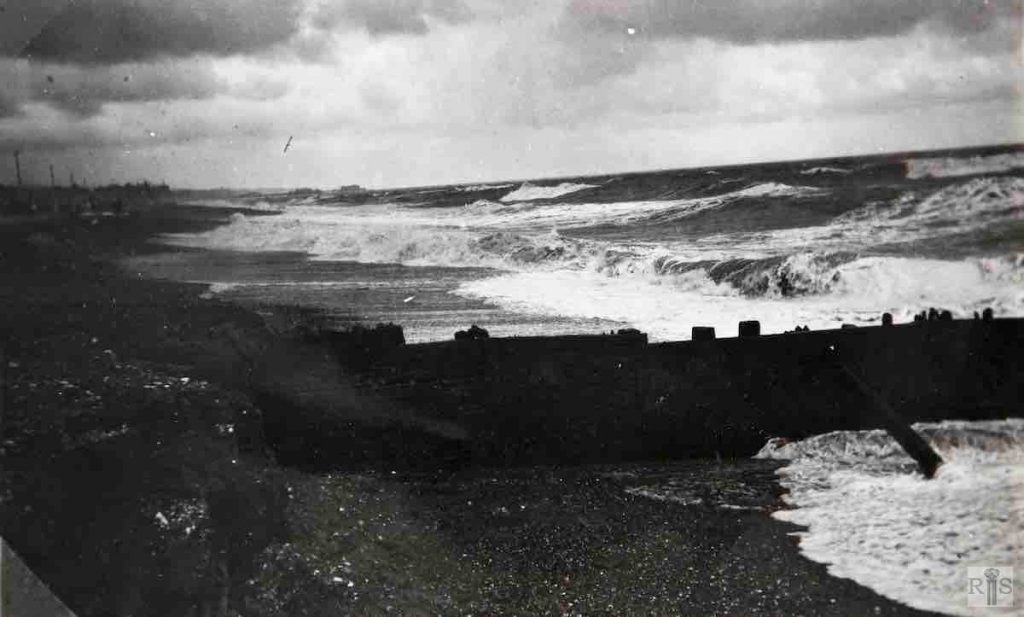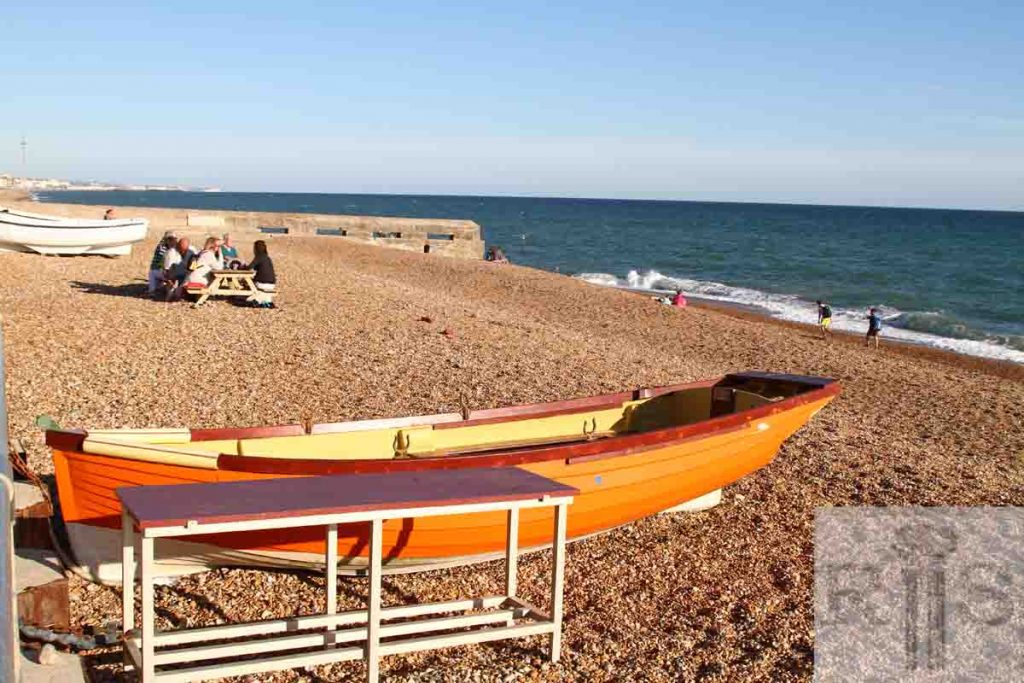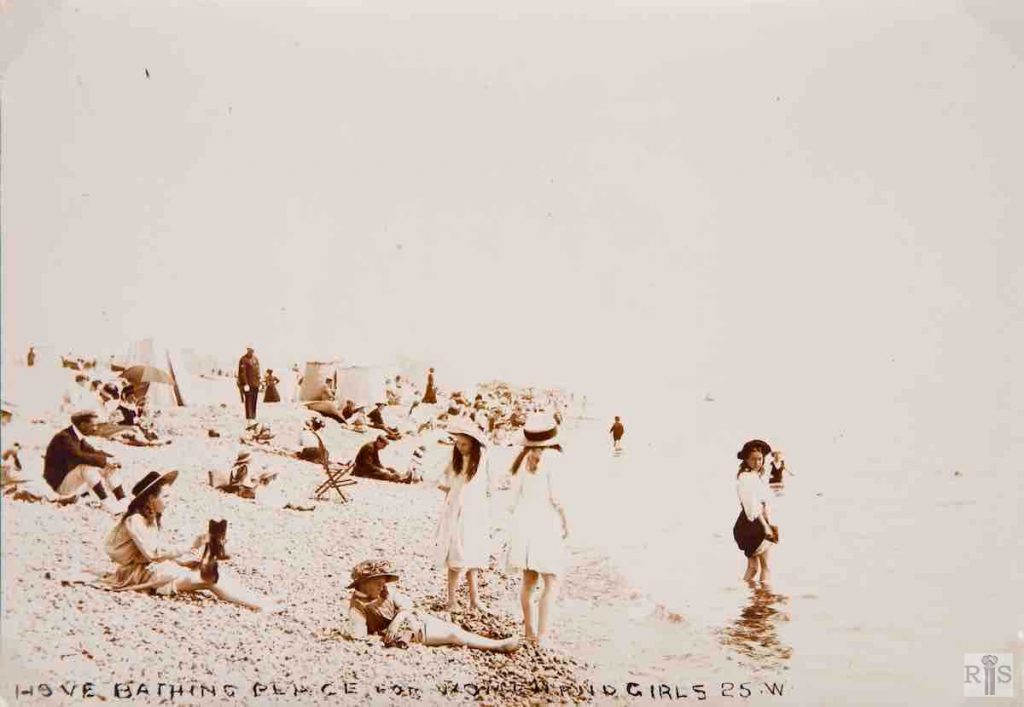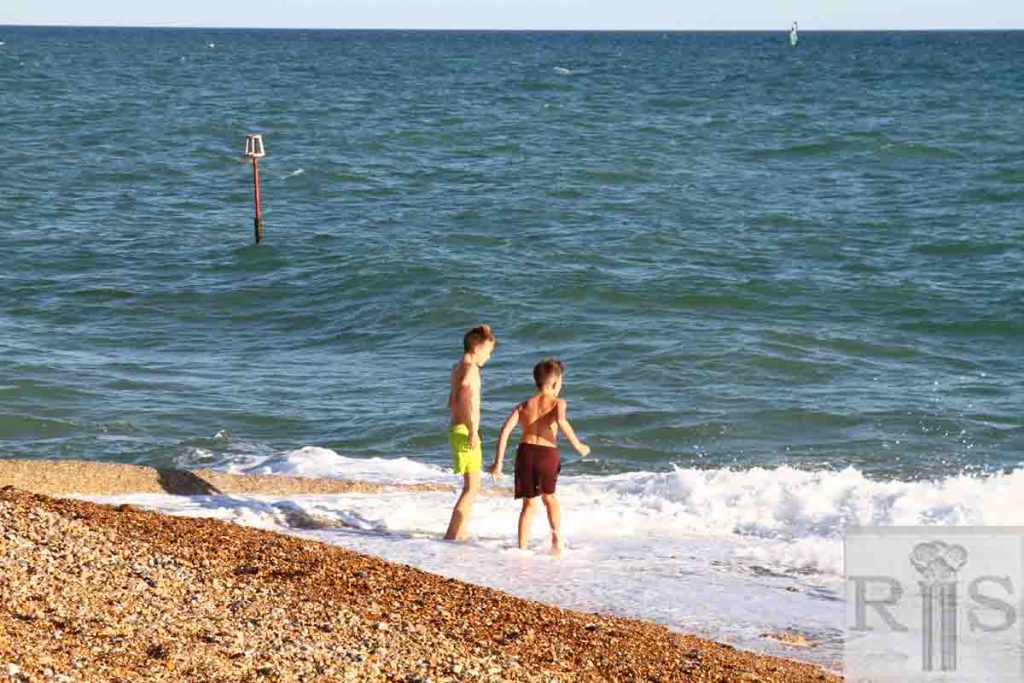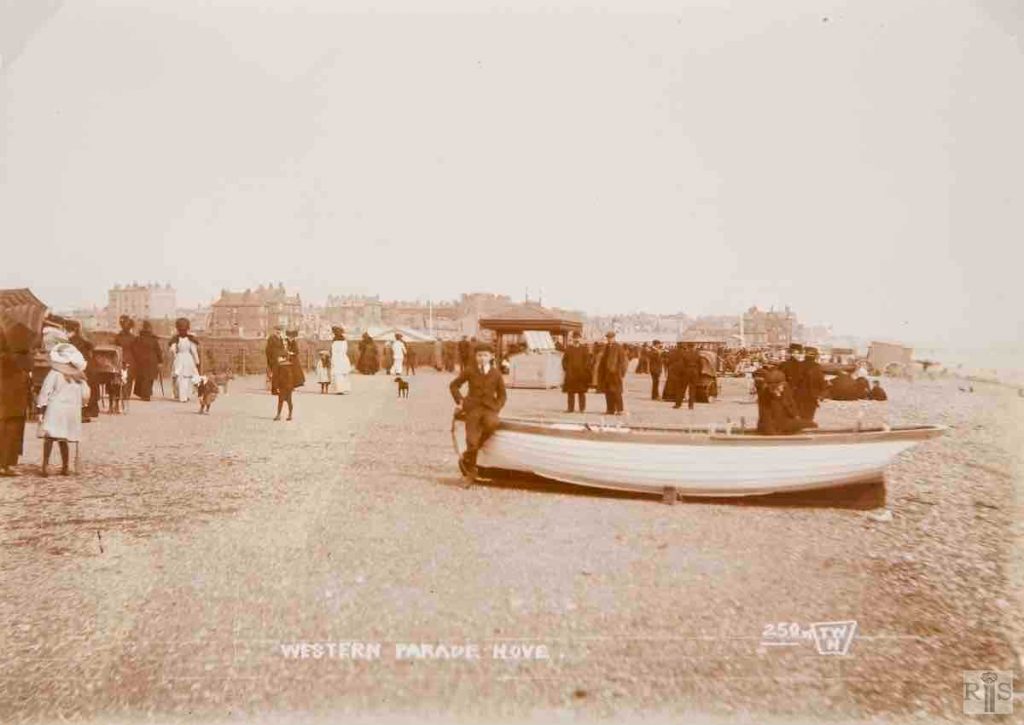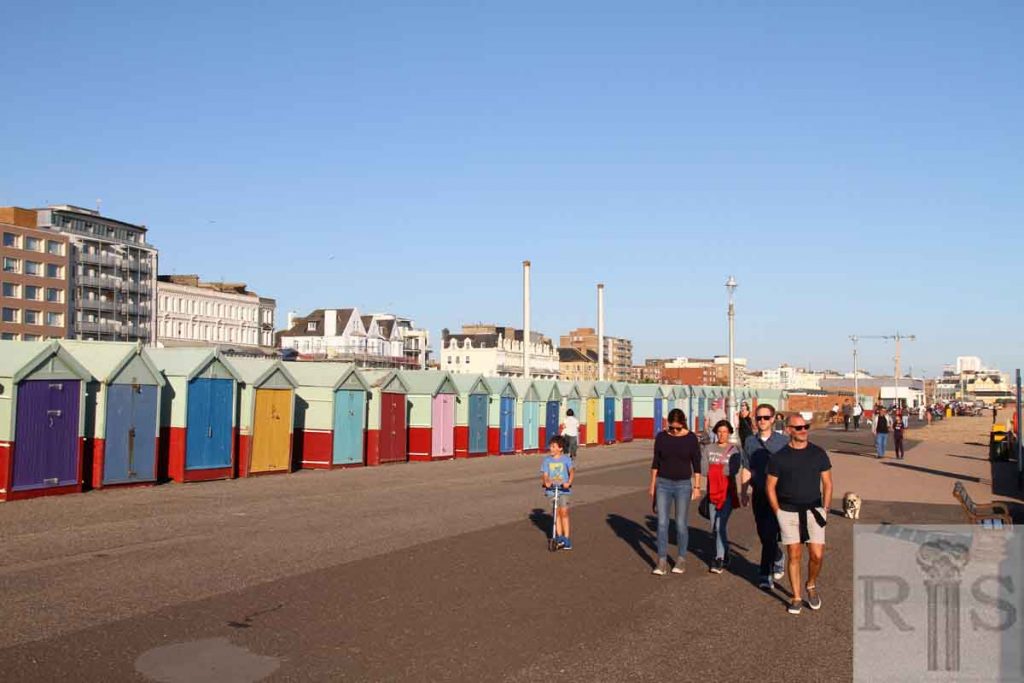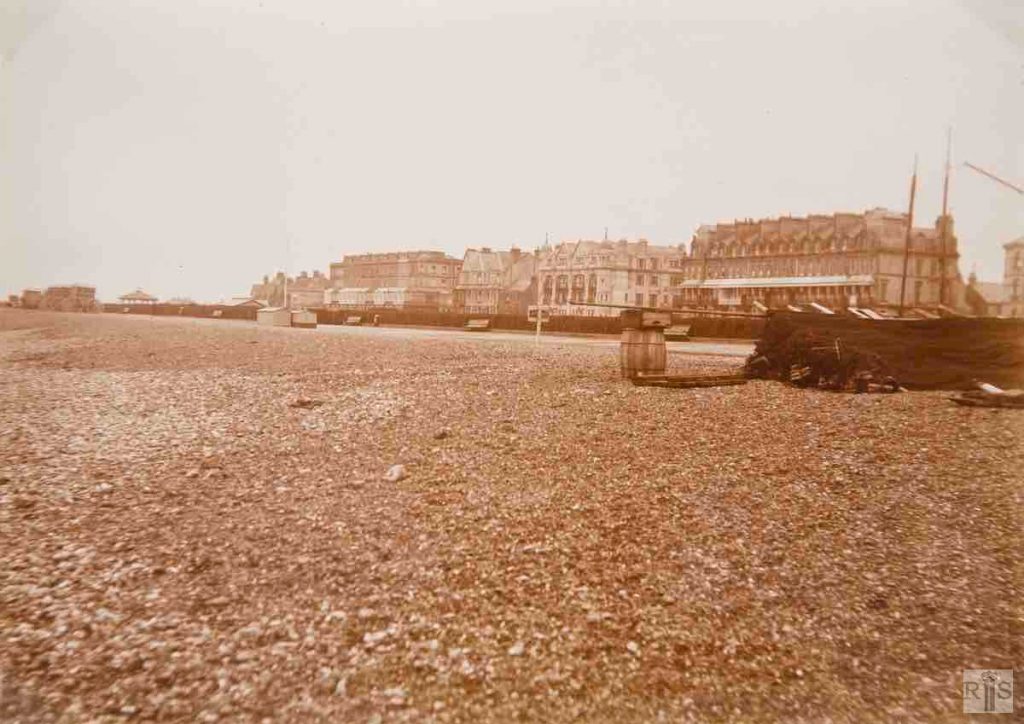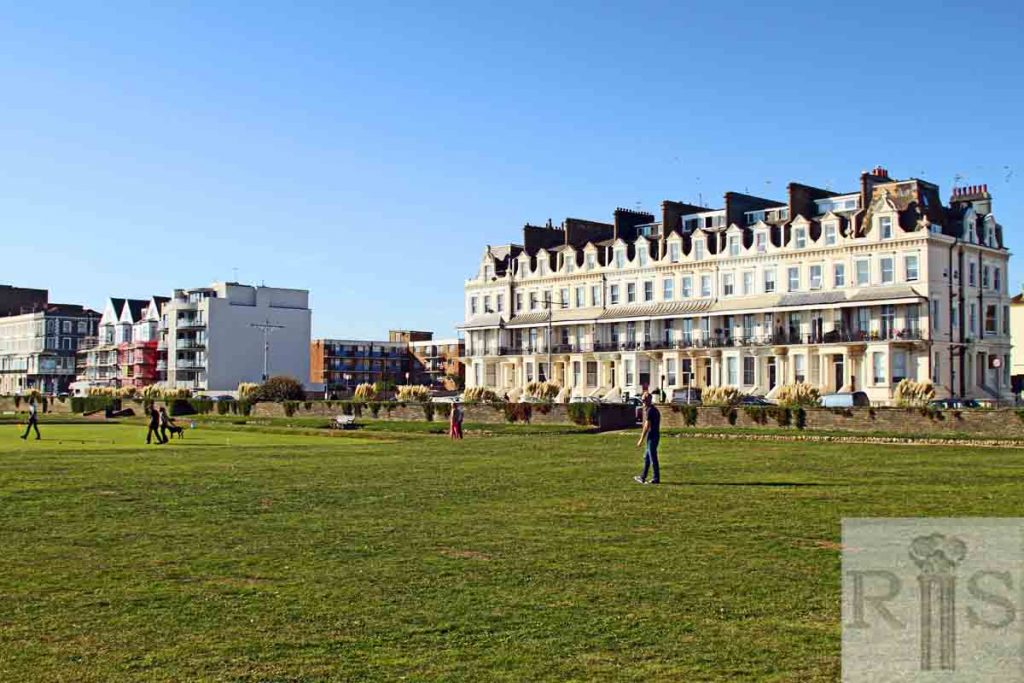James Gray: Another of the photographs which show the desolation on the front occasioned by the need to seal off and mine the beach and promenade in 1940, when Britain stood alone and facing the threats of invasion. Probably taken in 1944/5 when the wire and obstacles were being dismantled, they show the front in the area of the Lagoon. jgc_15_015
James Gray: [See caption for jgc_15_015 above.] jgc_15_016
James Gray: Two more photographs [see also jgc_15_017 on the Hove Seafront (3) page] of the mined and wired off promenade, complete with concrete tank obstacles, though whether these would have had much effect is now doubtful. The photographs are, of course, of different parts of the seafront. This view is taken from much further west, near to the present croquet lawns. The existing Roundhouse can be seen, and in the far distance, the West Pier with a central portion cut away as an anti-invasion precaution. jgc_15_018
James Gray: Contrasting views of the Lagoon over a period of about 35-40 years. An early photograph of 1930, a year or so after the Lagoon had replaced the marshy, swampy overflow from Aldrington Basin. Note the appearance of the competitors and spectators, with their sober clothing and all heads covered. jgc_15_022
James Gray: Contrasting views of the Lagoon over a period of about 35-40 years. The Lagoon of roughly the present day. Year not known but thought to be the late 1960s. jgc_15_023
James Gray: Another view of boating on the Lagoon. Very similar to that on the previous photograph, [jgc_15_023] and obviously taken at the same time and by the same photographer. jgc_15_024
2018: The Lagoon itself has hardly changed over the years but the café is larger and today there is a whole range of watersports and children’s play facilities on the site as a whole. In the background, a long row of beach huts has been built. Walkers can still cross the Lagoon on the walkway, clearly visible in both photos. (Photographer: Jan Sinkfield)
James Gray: A 1957 photograph, looking west from the extreme eastern end of the Canal, and showing a very different scene from that of 30 years later. Most of the buildings seen have gone. The massive Portslade Gas Works, built in 1870, has been demolished as has the Electricity Works (far right) though one of the twin chimneys is still there. jgc_15_025
James Gray: The early days of the Lagoon. A photograph of the 1930s. jgc_15_037
2018: Some of the houses seen on the north side of the Lagoon in the 1930s are still there in 2018, as is the cafe on the far right with the white pillars in front. The cafe is now called the Big Beach Cafe and since 2013 has been owned by Brighton & Hove based musician and DJ Norman Cook (Fatboy Slim). (Photographer: Susan Nicholls)
James Gray: Two photographs of the west beaches about opposite the Lagoon. jgc_15_042
2018: These two images [jgc_15_042 and 043] show the western end of Hove beach, opposite Hove Lagoon from in front of the Hove Deep Sea Anglers Club which overlooks this stretch.
James Gray: [See jgc_15_042 above.] jgc_15_043
2018: This view of the western end of Hove beach, opposite Hove Lagoon, from in front of Hove Deep Sea Anglers Club shows boats and tables belonging to the club. It is a popular spot for locals rather than visitors to meet. (Photographer: David Sears)
James Gray: Three photographs [jgc_15_044, 045 and 046] of the western beaches, between Hove Street and Langdale Road. The year is unknown but all are of the period just before World War 1, probably between 1910 and 1914. There is little about which to comment, save for the fact that the beach seems to extend right up to the Gardens. jgc_15_044
James Gray: [See caption for jgc_15_044 above.] jgc_15_045
2018: The James Gray image is marked Western Parade, Hove. It shows the westward extension of Kings Esplanade with the buildings of Kingsway in the background to the left (north) and, directly ahead, just discernible in the far distance, the distinctive dome of what until recently was The Alibi pub, hidden by cranes and new developments in 2018.
James Gray: [See caption for jgc_15_044 above.] jgc_15_046
2108: Of the three images jgc_15_044, 045 and 046 this is the easiest to identify with some of the finer buildings on this stretch of Kingsway still standing. The empty plot in the centre of the 2018 picture was formerly occupied by the Sackville Hotel. It was built in 1904 and collapsed suddenly in April 2006 during major building works. Twelve years later the site remains empty.
